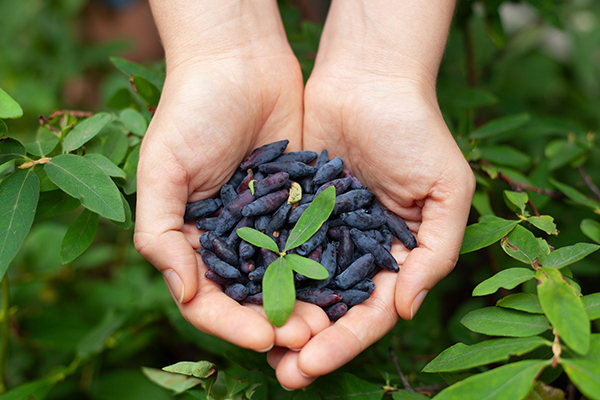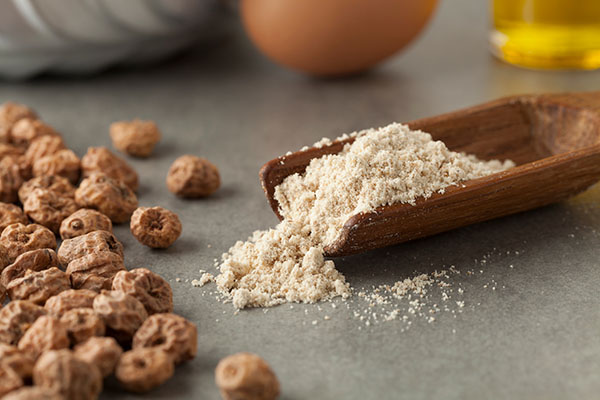
Advertisement
Move over, blueberries. There’s a new antioxidant-rich berry in town: haskap berry.
Also known as honeyberries, haskap berries are native to the islands of Hokkaido and Honshu in Japan. They grow on leafy bushes, which have the amazing ability to survive hostile, freezing winters. The berries themselves look like elongated blueberries, and each berry contains twin berries wrapped in purple-blue skin. Haskap berries taste unique, with a flavor profile best described as a tantalizing blend of tangy and sweet.
Haskap berries’ unique flavor makes them ideal for processing into relishes, jam and juices, according to berry and stone fruit supplier Soloberry. Recently, Soloberry saw its request for novel food approval granted by the European Food Safety Authority, meaning it can now commercialize the berry across the European Union.
According to Soloberry, the appeal of haskap berry as a new berry on the market stems from its superfood credentials. For starters, haskap berries contain more antioxidants than farmed or wild blueberries.
Haskap berries are also good for growers because of their suitability for northern climates. They also bear fruit early in the growing season. According to Soloberry, haskap berries also give growers the prestige of being involved in something new and healthy for future generations.
Since 2015, Soloberry has earmarked Poland as an ideal region in which to cultivate haskap berries. It has also partnered with major growers there.
Meanwhile, Canada-based superfood company, Haskapa, has been growing haskap plants since 2011. Because they are a small company, Haskapa currently freezes the berries for use in products that are sold in their retail store in Nova Scotia, Canada, as well as online.
Liam Tayler, commercial director of Haskapa, said the nice thing about haskap berries is their versatility. They have the capacity to be turned into wine but they can also be transformed into a health-food supplement because of their antioxidants. To date, Haskapa has created juice, jams and condiments with haskap berries. They have also infused other products with haskap berries, including maple syrup, gin and vodka. They also make body scrub, bath salt and soap containing haskap berries and plan to introduce haskap berry powder for juice and wine.
An antioxidant-rich superfruit
The haskap berry was named by the Ainu people of northern Japan, which includes the islands of Honshu and Hokkaido. They knew the haskap, which means “little present on the end of a branch,” as the berry of long life.
Treasured for centuries in Japan, Russia and China, haskap berries were enjoyed as a wild crop berry but were also used in traditional medicine. In Tibetan medicine, for example, a soup made from haskap bark was prescribed as a remedy for headaches, rheumatism, arthritis, and acute stomach pains.
A water extract from haskap flowers was used as a compress for treating eye issues, and crushed haskap leaves were used to clean and treat wounds. Meanwhile, young shoots collected while haskap shrubs were in bloom were used to prepare an extract that increased the passing of urine. The extract also helped prevent hair loss.
Today, haskap berries are best known for their unique flavor profile. Some people have described the flavor of the berries as something of a cross between raspberry and wild blueberry. Others say haskap berries have a hint of elderberry and a distinct tart flavor reminiscent of bumbleberry, or mixed-berry pie.
Recently, researchers have found that haskap berries contain high levels of bioactive compounds, particularly anthocyanins. Anthocyanins are plant pigments that give many fruits and vegetables their purple, blue and red colors.
In particular, the anthocyanin, cyanidin-3-glucoside, makes up roughly 85 percent of haskap berries’ total anthocyanin content. This compound has been reported to have antioxidant, anti-inflammatory, anti-ischemic and anti-cancer properties.
Haskap berries also contain modest amounts of vitamin C, an immune-boosting antioxidant, as well as dietary fiber and potassium. Antioxidants protect healthy cells from damage caused by oxidative stress, which has been implicated in the development of cardiovascular disease, diabetes and other chronic conditions.
Incorporating haskap berries into your diet
There are many varieties of haskap berry that are great when eaten fresh. But the berries are also great for pies, tarts or any recipe that calls for berries, especially blueberries.
You can also use haskap berries to make your own ice cream, yogurt and smoothies. Due to their high levels of a fiber called pectin, haskap berries are also perfect for making thick stews and jams.
Due to their novelty, haskap berries are typically sold dried. But don’t fret. Dried haskap berries retain all their valuable properties. They may also be frozen. When thawed, they fall apart to a smooth mass perfect for making desserts.
Haskap berries are a rising star in the realm of superfoods. Incorporate this delicious fruit into your diet today to reap its nutritional benefits.
Sources:
Advertisements







